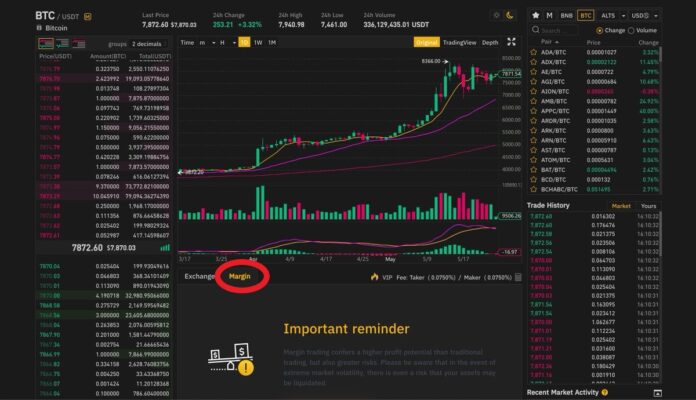Margin trading is the leverage mechanism for your investments. With this strategy, you will trade more money than you have on your account. While margin trading can increase your profits, it can also increase your losses. Hence, you should have a good understanding of how it works before you plunge. With this guide, you will learn the ideal margin trading process through crypto margin trading exchanges.
First Things First, About Margin Trading
Margin trading refers to the method of leveraging the trades. Whether it is currency, bonds, indexes, or cryptocurrency, you can generally leverage every asset class you want. It allows you to transact for more money. You borrow funds from your selected broker, which in exchange would collect a funding charge.
Learn the Basics Before You Trade
You would have to choose the amount of leverage you want to add to your trade-in terms. E.g., you have a balance of $500 and a leveraging of 10X. In principle, it means that you directly traded $5,000. If you gain 5%, the profit will be $250.
Loss Calculation
Your losses are amplified towards the other end of the spectrum. For instance, if the previous trade’s valuation declined by 2%, the losses will escalate from $10 to $100. Whatever leverage you intend to add, you must put the margin. It is like a safe deposit kept by the broker before the trade is closed.
What Can Happen In Absence Of Stop Loss?
If the trade moves against you for more than you have at the margin, the trade would be closed automatically by the broker. It is defined as “liquidation,” and it suggests that you can potentially lose the whole margin. This is why you ought to have a clear understanding of how margin trading works at crypto margin trading exchanges, because if you don’t have the requisite stop-loss protections in place, you may lose a lot of capital.
Step By Step Explanation Of How Does Margin Trading Work?
Margin trading has a lot to talk about, but let’s break down the complete process into manageable steps.
Leverage
First of all, the idea that leverage and margin apply to the same thing always persists. There is a slight difference, but they correlate with each other. Leverage relates to the multiple you intend to add to your transaction; margin refers to the original deposit you would need from the broker.
Generally, leverage is represented as a “ratio” or a “multiple.” For instance, It could be 5x and 5: 1, or 10x and 10: 1. It would help if you looked at leverage as a multiple for the sake of simplicity, but note that some brokers can display it as a percentage.
For example:
- You are looking to invest in ABC stocks.
- You have $2,000 in your account, but you want to invest more.
- As such, it applies 10x leverage.
- It means that your purchase order from ABC stock is now worth $ 20,000.
Based on the above case, let’s assume ABC stock raises by 10 percent later in the week. Usually, if your balance is $ 2,000, you’d have earned a profit of $ 200. As you have added 10 times leverage, though, you need to multiply that by 10. As such, you directly earned $2000 in profit.
Margin
Now you have to look at the margin requirement so that you know how leveraging works in reality. Margin is the initial protection that the broker needs from you to sell on leverage, in the most basic form. Simply put, It essentially equates to the size of the trade at crypto margin trading exchanges without leverage.
To calculate how much margin you will need to put in, you need to look at the multiple.
- For example, if you want to trade with 20x leverage, the required margin is 20% (1/20)
- If you want to trade with a 30x leverage, you will need to put a margin of 3.33% (1/30)
It is imperative to understand, as your entire margin is at risk when you trade on leverage.
Settlement
It’s now essential to discuss the meaning of “liquidation” beginning from the previous section on margins. As noted above, if your leveraged trade is moving against you for more than you have in your margin account, it will apply.
For instance:
- Let’s presume you have applied leverage on a purchasing order for GBP / USD.
- With 20x leverage, you bet $100.
- It suggests $2,000 worth of your exchange.
- Your margin of $100 corresponds to 5% of the trade size.
- The trader can liquidate if the GBP/USD deal goes against him by 5 percent.
- It ensures that immediately the trade closes, and you lose your $100 margin.
If the deal goes against you by 5 percent, which is the sum of the margin you set, you will be liquidated.
Final Line
In brief, margin trading is a highly advanced trading strategy that enables you to grow your profits. You will probably add leverage to thousands of financial instruments as long as you use a specialist broker. It covers inventories, charts, coal, energy, gold, cryptocurrency, and also interest rates. Margin betting and leveraging, on the other side, will even intensify the risks.






















